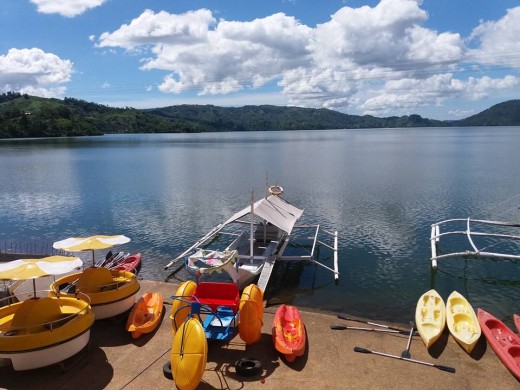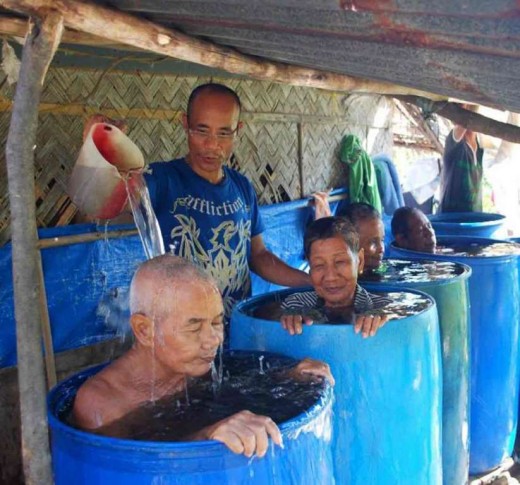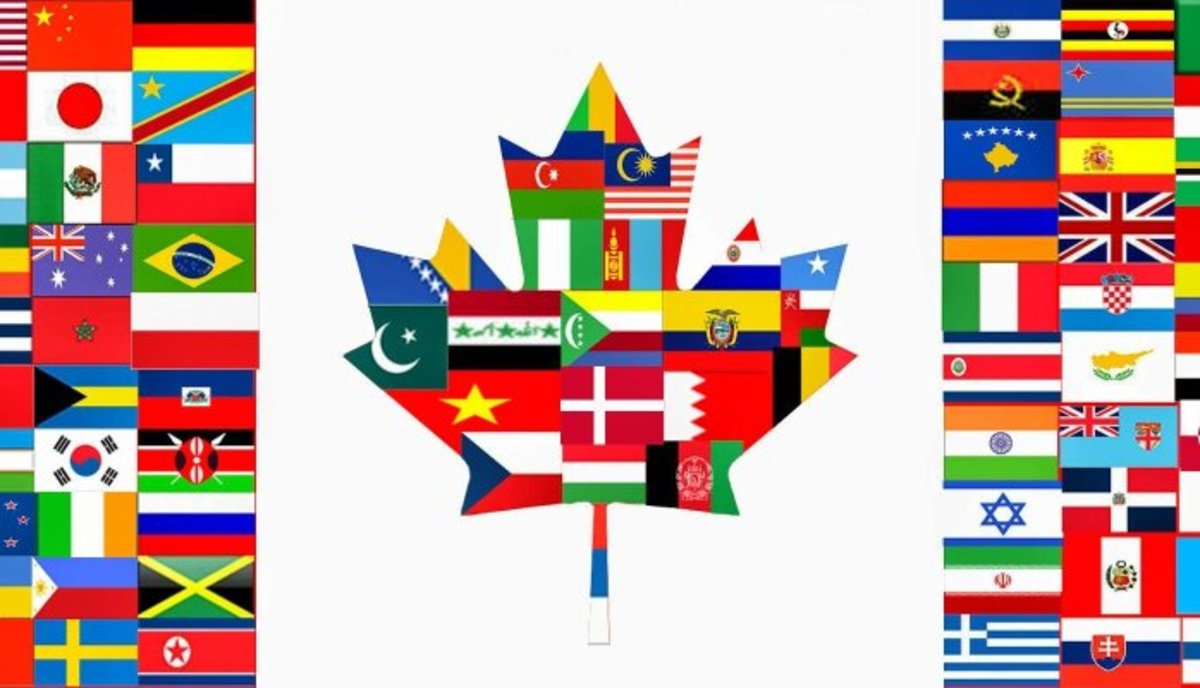- HubPages»
- Politics and Social Issues»
- Environment & Green Issues»
- Disasters & Recovery
Are we prepared for a hot winter?
Bracing for El Niño

Unruly Weather Patterns
2016 will be a mixed year of climate changes, extreme weather disturbances, even as the Fire Monkey brings an entourage of fire spirits with ‘fireballs’ that can usher in a truly long hot weather. But the hot weather global blanket would not be the same for all countries. In February, a probable strong push in wind direction could bring cold air masses from the Arctic and effect a super cold weather in the northern and eastern parts of the US, China, India, North Africa and Europe, while the equatorial countries would be experiencing scorching El Niño.
And as the Summer Solstice approaches, Europe, the US and the other northern countries would in all likelihood be experiencing heatwaves, while some countries in the Asia Pacific region including the Philippines would be languishing in the heavy rains and floods and some cold weather splash from the gusty winds of the Antarctic.
We are experiencing a challenging age where people are forced to cope in unusual and unconventional ways to survive the sudden shifts and radical changes in the weather patterns of the planet.
Greener Pastures in Safer Places
As early as 1995, Norman Myers and Jennifer Kent of The Climate Institute in Washington DC wrote about a mind shifting and alerting document, titled, “Environmental Exodus: An Emergent Crisis in the Global Arena.”
In their study, they cited statistics that as of 1995, environmental refugees totaled at least 25 million people, in contrast to the 27 million traditional refugees or those fleeing political oppression, religious persecution and intra-country wars. Environmental refugees or climate change refugees have become the “normal” trend today in countries affected by drought, desertification, soil erosion, deforestation, including earthquakes, storm surges, flooding and landslides.
Most of these 1995 environmental refugees were located in the African Sahel, the Horn of Africa and parts of Sub-Saharan Africa where 7 million people had to migrate in order to obtain relief food. According to Myers and Kent, the pressure points for environmental refugees are: landlessness, deforestation, desertification, soil erosion, salinization and water logging of irrigated lands, water deficits and droughts, agricultural stress, biodiversity depletion, extreme weather events, population pressures, diseases and malnutrition, poverty, government shortcomings, and ethnic wars. It’s basically a lack of sustained clean, nutritious food and water, clothing, a decent dwelling and medical care.
Climate Risky Countries
Recently, the Germanwatch “Global Climate Risk Index 2016” has identified Honduras, Myanmar and Haiti as the most affected countries in the long-term climate risk, from 1995 to 2014, followed by the Philippines, Nicaragua and Bangladesh. While African countries are vulnerable to drought that results in food loss and famine, the Asian and Latin American countries are vulnerable to earthquakes, storms, and flooding that results in death and destruction.
As the world continues on the path to uncontrolled Global Warming due to the unbridled use of fossil fuels, the precious large swath of ice mass in the Polar Regions are fast melting and could lead to large scale flooding due to the rising sea levels. About 5 billion people would be adversely affected by the combination of disaster events. The stark reality is we are not prepared to cope with sudden, life threatening events of large scale magnitude.
The COP21 in Paris that came up with an accord to limit the global average temperature “well below 2°C above pre-industrial levels and to pursue efforts to limit the temperature increase to 1.5°C above pre-industrial levels, would hopefully, significantly reduce the risks and impacts of climate change. The post-agreement scenario, if the 95 countries would have the political will to reduce greenhouse gases, would define the critical path to our survival.
Ways of Surviving a Heatwave
The heatwave in 2015 killed about 2,500 people in 13 states in India. Temperature ranged from 40 to 47 degrees Celsius. The prolonged disaster began in April and ended in June. In the UK and the southern parts of Europe, the heatwave began in June, the Summer Solstice and ended in August, reportedly killing more than 1,000 people. The hottest ever recorded was 38.5o C. Thousands of people drove to the Beaches during the second British heatwave.
The Disaster Center admonishes that extreme heat can kill by pushing the body to its limits. A heat wave is a prolonged period of excessive heat that can lead to body exhaustion and death. If a heatwave is expected, the Center advises that people should plan ahead. First is to learn where the heat hazards may occur in the local area. Next, if your home does not have any air conditioning, find places where you could get relief from the heat during the hottest part of the day.
Avoid strenuous work during the warmest times of the day to minimize body heat. Make sure your medicines are placed in a cool place during a heatwave as the heat could adversely affect the quality of the medicines. If you are taking medications that would be affected during a prolonged hot period, it would be better to discuss this with your doctor.
Wear lightweight, light colored clothing during a heatwave, since lighter colors would reflect the sun’s rays more than dark colored clothes. Plan with your family and identify who would be the most vulnerable members that might be most affected by the long, hot dry spell such as the elderly, the infants and children.
Make sure you have a full stock of clean, safe drinking water, or potable water from the tap if you’re living in a rural area far from the city. During a heatwave, more people should consume water to avoid dehydration, especially when one is traveling. Nature’s disaster spell will come a bit early in 2016 by about the month of February for Asia Pacific and equatorial rim countries including in Central America and will gradually increase by March. April, May and June would be the hottest for these countries that would also be visited by typhoons.
El Niño or a long drought period is also expected to happen. In some Southeast Asian countries El Niño has started as early as January 2016. Conserve water by recycling used water or by setting up open water bins or “rain catchers” in the event the rains would come.
In the Philippines last year a 46-degree Celsius heatwave killed two senior citizens in a north town of Luzon. What the other elderly people did was to ensure the body’s cooling by immersing themselves in tanks of cool water daily as shown in the picture below.
Cooling down the seniors in Isabela, Philippines

Deadly Fires
Fires could easily occur during a heatwave in the Year of the Major Fire Monkey and it is important to always check out electrical connections at home, making sure that all electrical outlets are not in use before sleeping at night. The charging of cell phone and laptop batteries must be done when someone can monitor the task. Reduce your home’s power consumption by proper insulation. This would also reduce the risk of producing excessive heat inside the house. Check your home's air conditioning ducts regularly.
These are also the times when wild fires can easily be set up by a careless throwing of still-lighted cigarette butts on dried leaves in an open forest. In Asian countries, the old slash-and-burn agricultural practice contributes to the risky scorching of the natural environment found in the rural upland areas. About 73,700 acres (29,800 hectares) of forest lands were burned in the Valley Fire California on September 12, 2015 not to mention the forest fires in Indonesia.
Are we prepared for hot winters and cold summers?








